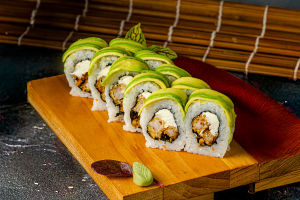In a world more connected than ever, food has become one of the most visible markers of globalization.
Local cuisines that once existed in cultural silos are now shaped by global trade, migration, and communication. But how exactly has globalization changed what we eat, how we cook, and how we think about food?
It's a fascinating journey, and whether you're enjoying a Vietnamese banh mi with French baguette roots or sipping bubble tea in Paris, you're already part of this global culinary conversation.
The Spread of Ingredients Across Continents
Before globalization, most people ate what was grown or raised locally. Now, ingredients once considered rare or exotic are found in supermarkets everywhere. Quinoa, once a staple crop in the Andes, is now common on menus in Europe and North America. Avocados, once mostly grown in Central America, are now enjoyed globally in everything from salads to sushi.
This easy access to diverse ingredients allows home cooks and professional chefs alike to experiment with fusions and reinterpretations of traditional dishes. According to the Food and Agriculture Organization (FAO), international food trade has grown by over 250% since the 1980s, drastically expanding food choices around the world.
Fusion Cuisine and Culinary Creativity
One of the most visible outcomes of globalization is fusion cuisine. This involves blending culinary traditions from different regions to create something entirely new. Think of Korean tacos (a mix of Mexican and Korean flavors).
Fusion can be both a celebration of creativity and a symbol of evolving identities. It reflects how modern societies are multicultural, dynamic, and open to experimentation. However, not all responses to fusion are positive—some feel it dilutes traditional practices or results in cultural misunderstanding. The key is balance and respectful blending rather than superficial mash-ups.
Fast Food and the Standardization of Taste
While globalization has increased food diversity, it has also led to a degree of homogenization. International fast food chains have become common in cities worldwide, often altering local diets and eating habits. Burgers, fries, and soda have reached areas where they were once unknown, sometimes replacing home-cooked meals or traditional street food.
According to a 2022 report by the World Health Organization (WHO), the spread of highly processed foods has contributed to rising health challenges in both developed and developing nations. This highlights the importance of preserving local food practices while navigating global food trends.
Local Cuisines Adapting to Global Tastes
Global influence doesn't always mean abandoning local traditions. In many cases, chefs and food producers adapt their traditional dishes to suit international palates. For example, Thai cuisine served abroad might be less spicy than its native version. Similarly, Asian dishes in the West often lean sweeter or are modified to include more vegetables and sauces.
These adaptations make cuisine more accessible while preserving its roots. In doing so, they help spread culinary appreciation across cultures. Local food becomes global, but it also helps educate diners about the cuisine's original spirit.
Preservation of Food Heritage in a Global Age
One of the challenges of globalization is protecting culinary heritage. With the popularity of fast, convenient, and international foods, younger generations may lose interest in preparing traditional recipes. But in response, many organizations and chefs are actively working to document and revive native cooking practices.
UNESCO has added several food-related traditions to its list of Intangible Cultural Heritage, including Mexican cuisine and Korean kimchi-making. These efforts not only celebrate food culture but also promote sustainable, local agriculture and community-based cooking.
Technology and the Rise of Food Awareness
Social media and digital platforms have also played a major role in how globalization shapes food. From food bloggers to TikTok recipe creators, people now share culinary ideas instantly across borders. This digital food culture fuels curiosity and knowledge, encouraging experimentation at home and supporting food businesses of all sizes.
Interestingly, technology has also created a renewed focus on "eating local," as people seek authenticity and connection to the source of their food. Global platforms are helping people rediscover local ingredients, recipes, and producers—even in the face of global influence.
The Emotional Connection to Traditional Food
Despite all the change, many people still feel a strong emotional connection to the foods of their heritage. Family recipes, festive dishes, and comfort meals are often tied to identity, memory, and love. While globalization adds new flavors to the table, it rarely replaces the emotional power of traditional food.
In fact, global interest in these emotional stories behind food—through cookbooks, documentaries, and travel shows—has helped elevate and protect local cuisines. Chefs like Massimo Bottura in Italy or Gaggan Anand in Thailand have demonstrated how traditional roots can power modern innovation.
Conclusion: A Culinary World in Motion
Globalization has certainly changed local cuisines, but it hasn't erased them. Instead, it has transformed the way we share, adapt, and protect our food traditions. It's a blend of opportunity and responsibility.
So, next time you eat a dish that blends cultures or uses ingredients from another continent, ask yourself: How did this come to be? And how can we continue to enjoy global flavors while honoring the roots of every cuisine?
We'd love to hear from you—what global dish has surprised or delighted you lately?


